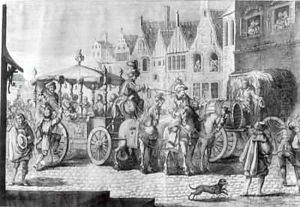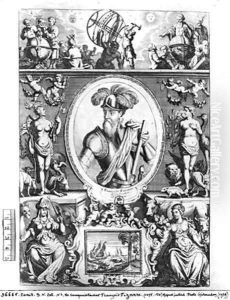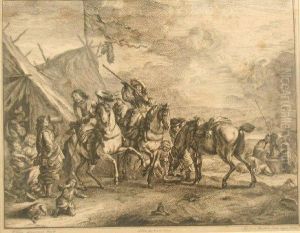Gaspar Bouttats Paintings
Gaspar Bouttats was a Flemish engraver and printmaker, born in 1640 in Antwerp, a city that was then part of the Spanish Netherlands. He hailed from a family of artists, which included his uncle, Frederik Bouttats the Elder, who was also an engraver and likely one of his early teachers. The Bouttats family played a significant role in the development of Baroque printmaking in the region, contributing to the rich artistic culture of the period.
Gaspar Bouttats is best known for his detailed engravings that covered a wide range of subjects, including historical scenes, portraits, and religious themes. He was particularly adept at capturing the intricate details of his subjects, which made his work highly valued during his lifetime and beyond. His technique involved a combination of etching and engraving, allowing for a dynamic interplay of light and shadow that brought his compositions to life.
Throughout his career, Bouttats worked on various important projects, including illustrations for books and standalone prints that were sought after by collectors. He was part of a vibrant artistic community in Antwerp, which was a center for the arts in the 17th century, attracting artists from across Europe. This environment fostered creativity and innovation, influences that are evident in Bouttats' work.
Gaspar Bouttats' contributions to the art of engraving are part of the larger story of Baroque art in the Low Countries. His works are preserved in several museums and collections worldwide, serving as a testament to his skill and artistic legacy. He passed away in 1695 in Antwerp, leaving behind a body of work that continues to be studied and admired for its craftsmanship and beauty.


